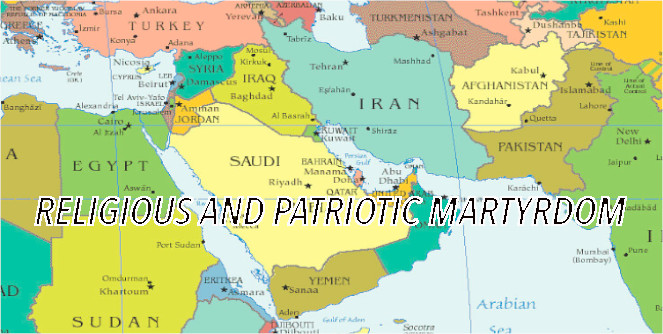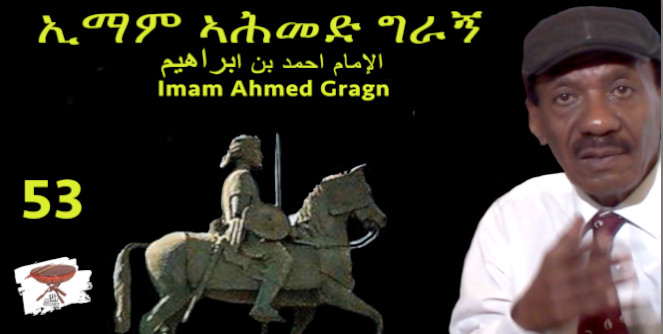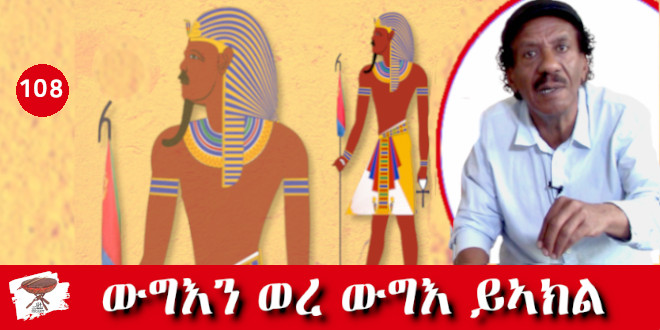Religious and Patriotic Martyrdom

Foreigners and warlords build nation states based on selfish interest, though most of the time warlords build nations by accident. Free people established nations based on geography, history, and conquests based on security and viability. In short, states are built on a foundation of values that provide sustainability, confidence, and hope. Since the most valuable element that members of society could offer, for the common good, is their lives, martyrdom is the most binding and the most revered aspects of a nation.
Ironically, though the people who lose their limbs, eyes, or are deformed suffer more, they are not equally revered as a martyr. In some instances, only breathing separates some war casualties from the Martyred. So, Eritreans remember their martyred heroes with so much respect and emotions.
Martyrs are not just numbers, imaginary characters; they remain part of the society for a long time until time takes its toll and they slowly fade away from the collective memories as names, though they live forever as the “unknown soldiers’ embodied in memorial celebrations, in monuments dedicated to them, and in our national narrations. In time, even their loved ones, their friends and colleagues will all be gone, but until they do, their lives would have been one of pain, suffering and sadness.
What is Martyrdom?
The Eritrean culture of martyrdom is an extension of the religious culture of the Middle East. But it seems Eritreans have become so attached to martyrdom to the extent that the PFDJ[1] rulers want to maintain that culture intact, as if the nation has no other destination but martyrdom. And that has been upgraded to make living martyrs of every adult. Though martyrdom serves patriotism, promotes the sense of service to a nation, and to humanity, in the Eritrean case (and a few other countries) the society led by the ruling regime promote the culture martyrdom more than the respect for life.
Martyrdom has its early origin in the Jewish tradition of Kiddus Hashim ( ቅዱስ ሽም الاسم المقدس), protecting the name of God even by sacrificing one’s life. Under the Roman rule, Jews were killed and attained martyrdom in the thousands for refusing to convert to Christianity. And martyrdom became a way of life under the Roman persecution of Jews. However, after the Romans accepted Christianity, and took charge of the religion, due to their imperialist powers, mainly military might, they persecuted, even Christians of other denominations for not accepting the Roman version of Christianity. And martyrdom continued.
In the Middle ages, Catholicism became the identity of the Roman Empire and until 1806 the Pope was the supreme ruler over most of Europe from his seat at the Vatican. Even if persecuted as apostates and heretics by the Catholic authorities for rejecting a religion, they were recognized as martyrs to their lots. Killing Christians became an entertainment to Roman dignitaries and people died in so many cruel ways, such as being pushed to an arena to wrestle against lions to save their lives. If they were mauled by the wild animals (and mostly they did), they all became martyrs.
Similarly, in Islam, the same trends were duplicated as rulers wanted to expand their imperialist domains, and the society branded many intellectuals, dissenters, and opposition as apostates and heretics. Depending on where one stands, both killers and the killed are still considered martyrs. Sadly, that has been the case since the early days of Islam when fighting between different factions raged. Some of these wars and the brutality that followed were similarly shocking as those practiced in Europe.
In the Middle East, the Iran-Iraq conflicts evolved into the all too common Shia-Sunni schisms. And in the 1980s, hundreds of thousands were killed and wounded in a war that raged for a decade—causalities from both sides are considered martyrs by their respective nations.
Similarly, in modern times, factional fighting–the Irish conflict–between Protestant and Catholics cost the two sides many lives in a conflict that has its origins centuries ago.
In ancient times, a lot of blood was shed between different Christian factions—mainly on religious grounds. The history of Alexandria[2] is replete with bloodshed since it was the main seat of Eastern Christianity. In the conflict, the region saw a lot of bloodshed when the followers of Arius and others were eradicated in Egypt and the Levant.
The Meaning of Martyr
The word martyr was coined from the Greek word “martus”, meaning a witness or testimony. Similarly, though the word Shehid in the Arabic (Kuraan) means a Witness, over time it developed to denote someone who dies for a cause—protecting what is perceived as right and godly, such as one’s faith. Generally, a person who dies protecting his property, his family or himself, is also considered a martyr and so are victims of fire, drowning ,and other calamities.
Since the 19th century, the term gained its modern currency when it was applied to the politics and struggle in any national cause.
Though the religious meaning of a martyr–voluntarily accepting death–was developed out of the confrontation between Roman rulers and the Jews. But according to the newer use of the term, Christians believe that Jesus Christ is the first martyr who was crucified to absolve them of the first sin. However, Saint Stephen (died in 34 AD) is widely considered to be the first martyr in Christianity, when dissidents were burned alive at the stake, crucified, or stoned to death.
Mayan sacrifices…
In ancient times, there were prevalent pagan traditions of self-sacrifice and sacrificing human beings to appease the gods or the evil powers. That tradition was still prevalent during the first two centuries of the Christian era. But until a little over a thousand years ago, the Mayans continued to sacrifice people in what was considered exquisite ceremonies.
To this day, the most remembered story of an attempted human sacrifice is described in the Bible and Kuraan when Abraham was about to sacrifice his son for the sake of God. According to the books, Abraham had his knife ready to slit the throat of his son when an angel descended with a lamb and offered it as a sacrifice in place of his son. However, the Bible and the Kuraan differ whether the son that Abraham was about to sacrifice was Isaac or Ishmael.
It’s widely believed that the concept of martyrdom originated in the Jewish culture and it was carried on by Christianity and Islam. Today, the culture still flourishes in the Middle East and has spread to many parts of the world. And the benign (and passive) form of martyrdom exists among the Evangelists who believe that being a Christian entail being persecuted; they accept is as a natural result of their faith.
Jesus Christ was the first martyr in Christian tradition.
The Roman Catholic church even developed degrees of martyrdom denoted by the colors of Red, blue/green, and White. That was detailed by Pope Gregory 1, who explained the different degrees colors: Red being the highest form of martyrdom, actual sacrifice in blood, while other colors are lesser sacrifices. That could be the inspiration for the colors of the Italian flag (Green, White, and Red), and the French flag (blue, white and red). Hungary, Croatia, the Netherlands, Czech republic, Luxembourg, Slovenia, Serbia, even Russia and England.
Notably, there are many European flags with a cross: UK, Sweden, Denmark, Iceland, Finland, Norway. Though this is proof that religion is deeply engrained in the psyche of people, the West has come a long way to establish a liberal, prosperous, and confident nations.
In Muslim countries, there are three countries whose flags carry religious inscriptions: Saudi Arabia’s flag (there is no God but Allah), Iran (Allah), Iraq, (God Is Great). However, there are about 14 Muslim (or Muslim majority) countries whose flags carry variations of the crescent and star (s). They are influenced by the flag of the Turkish caliphate when it ruled vast areas of the Middle East, North Africa, and Europe. Neither the crescent nor the moon is a sign of Islam.
In China, missionaries were killed by “slow slicing”, cutting pieces of the body until the person dies, and the missionaries who were killed were considered red martyrs. However, until a few centuries ago, Catholic Europe killed other Christians by burning them alive, stoning, and other cruel means.
Famous Martyrs
As mentioned above, Saint Stephen is considered the first martyr of Christianity after 34 AD when he was stoned to death in Jerusalem for preaching the Gospel of Jesus Christ.
But the most famous Christian martyr is Joan of Arc (Jeanne D’Arc) whose story is taught in many schools around the world. A peasant girl from the France, Jeanne D’Arc became a formidable soldier and fought against the English invaders defending her king. She was caught and burned at the stake when she was only 19.
The first martyr in Islam is believed to be Yasir Bin Amer ASlEnsi, a Yemeni who settled in Mecca and married a slave girl named Sumayyah. Yasir was among the first to follow the prophet of Islam and in the 7th century, the early years of Islam, the pagans of Mecca tortured him and his wife to death. Some historians consider his wife is the first Muslim martyr because she died first.
In explaining Martyrdom, Saint Gregory is quoted as saying, “it is mere rashness to seek death, but it is cowardly to refuse it.” In modern times, Christians “must desire life like water and yet drink death like wine.”
To this day, Muslims are encouraged to seek martyrdom in defense of their faith, country, family, and property. And the tradition of martyrdom is still alive in the Middle East. Unfortunately, it has given insane outcasts like ISIS and others, an idea that they distorted to wreak havoc around the world.
In Eritrea, Suw’e/Shehid has almost lost its religious connotation and has survived as a national, patriotic feat and value. However, there is no consensus among followers of the Abrahamic religions on the modern-day adaptation, but still, martyrdom is strongly associated nationalism which is the main motive for martyrdom.
Both Christians and Muslims believe that martyrs are assured of a place in heaven—some are prescribed, but most beliefs on the rewards are fantasies incubated in the minds of deprived backward societies.
Finally, though the above is its historical development, undeniably the notion of martyrdom motivates people to fight against injustice and it will thrive as long as people suffer from oppression, illiteracy and depravity. What needs to be tamed is the warped notion perceived by outright killers claiming to be pursuing martyrdom with the sole idea of mythical rewards in the afterlife.
In the Eritrean case, the sacrifices were made in pursuit of lofty ideals: freedom, justice and dignity. That is why Eritreans revere their martyrs without much religious connotation. It’s widely perceived as a selfless act of exposing one’s life to danger so that the rest of people can live in peace, justice, and freedom.
But even in Eritrea, there are damaging consequences of the culture of martyrdom. The notion is so abused its meaning has been disfigured: the perception that Eritreans do not die, they are martyred. It’s commonly (and rationally) believed that a martyr is someone killed in the action of pursing a national goal. But once that person pulls out of the risky fight, retires, or become a driver, gets sick, and dies, he just dies, not martyred. The PFDJ has abused the term so much that it calls every person who dies in its services, even if against the people, a martyr.
In essence, according to the PFDJ, those who die under the service are martyrs while the rest simply die. Worse, those who die struggling against its oppression are not even given the dignity of mentioning their names, or the right to be buried in Eritrea. In short, this emotional blackmail has devaluated the honor of martyrdom which has become an important tool of oppression for the rulers of Eritrea.
_________
[1] Peoples Front for Democracy and Justice (PFDJ), the only ruling party with Isaias Afwerki as its president since since independence Day, May 24, 1991.
[2] Recommended reading: Azazeel, a book by Yousif Zeidan



Awate Forum